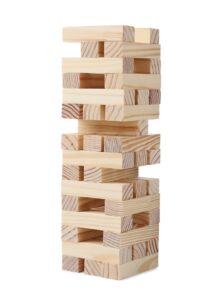Weightless at Any Weight
Just the mention of weight makes most of us ashamed in some way or another. No one can quite get it right, or so it seems. Our culture doesn’t tolerate those who weigh “too much” by its standards, but weighing too little isn’t acceptable either.
But there’s another way to look at weight, something different from what others see externally, or what registers on the bathroom scale. I want to talk about how we feel our own weight. Is it heavy or light? Is it possible we could feel weightless?
My first encounter with this concept came early in my practice of Balance. Angie Thusius and I visited a student’s home in San Francisco and saw a photo similar to the one above. Angie was delighted with how “light” the woman in the photo was. At the time I wondered how in the world Angie could see weight. What was she talking about?
The following early teaching experiences helped me realize that, in its essence Balance is about shifting body weight. When our weight is “on the line” we always feel lighter and more at ease.
Some examples:
After I placed a 12-year-old boy on his pubic bones, he exclaimed: “I feel lighter.”
When I checked a medical student sitting for meditation, he reported that she felt completely weightless.
In a short course at Stanford, I checked a very tall man practicing. He asked if I had lifted him off the ground. Then he realized that was impossible and we both knew he’d had a moment of weightlessness.
A tenant who lived over our garage asked me about Balance. During our conversation I showed him how to stand closer to the line and right away he said, “Wow, I feel lighter.”
Now it’s common for students to report their experiences of feeling free of their body weight, light as a feather.
Weightlessness is the result of getting your skeleton on the line of gravity. It’s both hard and easy. It’s hard because:
- We don’t have a straight bone in our body. In utero we float in amniotic fluid. As a result, all our bones form in curves and spirals.

To be on the line is not like stacking rectangles of wood.
It’s more like stacking irregular stones.

2. Finding the line is hard because we have been off the line of gravity so long that it is disorienting when shifting our body weight to being on the line. At first, you feel more “off balance” when you are more upright. You think you are leaning forward when you are more vertical.
3. Being on the line is also hard because compensations, adaptations, have been made in our flesh and bones to accommodate being off the line. For example, when a thirty-year-old male student sat in Balance with his feet aligned with his legs, he couldn’t stay in that position very long because the stretches in his legs were so intense. The natural length of his lower leg muscles had changed to accommodate the misalignments in his ankles and feet.
You can see “heavy” or “light” right now. Consider the two young people below, who looks heavy, and who looks light?


The young person on the left is off the line. He doesn’t recognize how heavy and uncomfortable he feels because he has no comparative experience. However, if he learns to sit in Balance, he will notice the difference and recognize how much lighter he feels.
The skeleton of the person on the right is on the line. It is doubtful that she notices her own weightlessness, because by living on the line she has always felt light and easy.
As you observe the bodies of these two people you can imagine how their posture, on or off the line of gravity, affects their health, the way they age, and their attitudes toward their body.
It’s never too late to shift your body weight to one of lightness. Furthermore, it’s easy. You can do it right now, wherever you are.
- Sit on the front of your pelvis, literally the pubic bones.
- Check that your breastbone (front chest) is above your pubic bones.
- Draw your chin down and back up your neck.
- Do it again with 10% effort. Let your bones hold you. Soften any area that feels tight.
You’ve become lighter without changing your diet. Enjoy the feeling.


